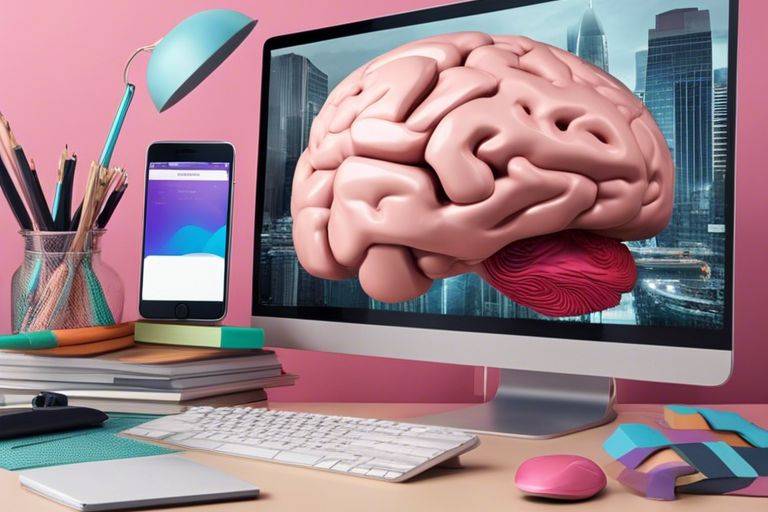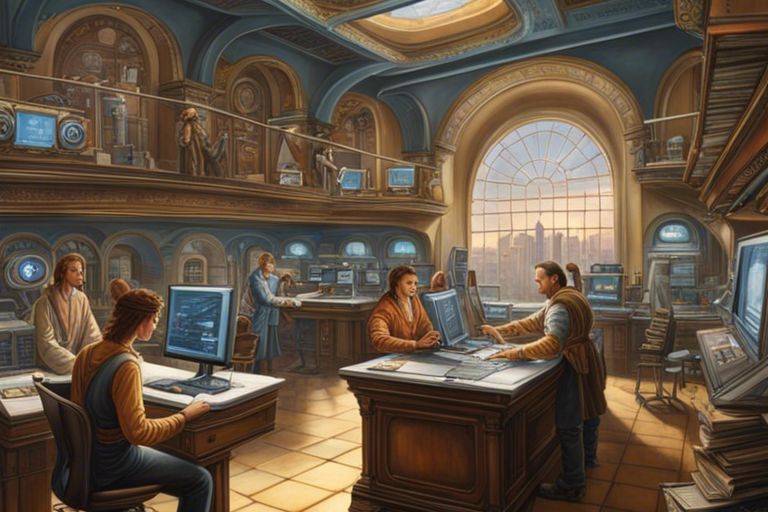With the increasingly fast-paced and digitally driven world we live in today, creative professionals face unique challenges when it comes to managing their ideas, projects, and inspirations. In order to stay organized, productive, and innovative, having a second brain has become not just a luxury, but a necessity.
In this blog post, we will explore the reasons why creative professionals should consider adopting a second brain system, the benefits it can bring to their workflow, and how it can help them navigate the complexities of the modern creative landscape with more efficiency and effectiveness.
Key Takeaways:
- Information Overload: Creative professionals are bombarded with a vast amount of information daily, necessitating a structured system like a second brain to organize and make sense of it.
- Enhanced Creativity: By offloading and organizing information into a second brain, creatives free up mental space to focus on generating new ideas and creative solutions.
- Efficient Workflow: Having a second brain enables professionals to quickly retrieve and reference relevant information, leading to improved productivity and workflow efficiency.
- Collaboration Facilitation: A second brain can serve as a shared knowledge repository, making collaboration easier by providing a centralized platform for team members to access and contribute to.
- Adaptability to Change: In a fast-paced and ever-changing creative industry, a second brain can help professionals stay agile by allowing them to adapt and reorganize information as needed.
- Long-term Knowledge Management: Creative professionals can utilize a second brain as a tool for long-term knowledge management, ensuring that valuable insights and ideas are preserved and easily retrievable.
- Personal Development: Beyond work-related benefits, a second brain can also be used for personal growth, learning, and goal setting, making it a versatile tool for creative professionals.
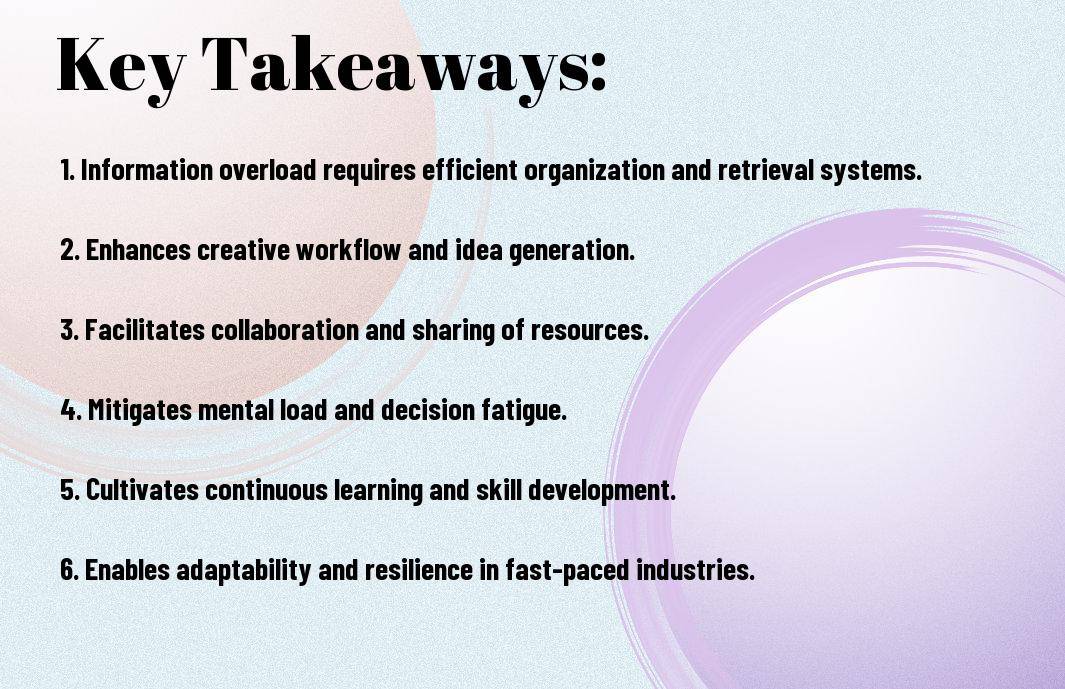
The Evolving Landscape of Creativity
The Digital Revolution and Its Impact
Assuming you are a creative professional in today’s fast-paced world, you are constantly facing the challenges brought about by the digital revolution. This upheaval has revolutionized the way we create, consume, and distribute creative work. The influx of digital tools and platforms has opened up new possibilities for collaboration, experimentation, and reaching audiences on a global scale.
Information Overload and Creative Block
To navigate this evolving landscape successfully, it is crucial to address the issue of information overload and creative block that many creatives face. In an era where a deluge of data bombards us from all directions, it can be overwhelming to filter through the noise and find inspiration. This inundation of information can lead to creative block, hindering the flow of ideas and stifling innovation.
Landscape: The increasing amount of information available at our fingertips has the potential to spark new ideas and fuel creative endeavors. However, without a system in place to organize and make sense of this vast sea of data, creatives can easily get lost in a mire of distractions and unproductive tangents. Finding a balance between consuming content and synthesizing it into meaningful insights is imperative in cultivating creativity in the digital age.
Understanding the Second Brain Concept
Definition and Core Principles
To truly grasp the concept of a Second Brain, it is necessary to comprehend that it serves as an extension of our own minds. Think of it as a digital workspace where you store, organize, and make connections with information that matters to you. This external extension is designed to enhance your creativity, productivity, and overall cognitive abilities by providing a reliable system to offload and process information effectively.
How the Second Brain Complements Natural Cognition
Cognition refers to the mental processes involved in gaining knowledge and understanding. Your Second Brain acts as a symbiotic partner to your natural cognitive abilities. By leveraging technology to capture, curate, and retrieve information, your Second Brain complements your memory and thinking processes. It allows you to offload the burden of information overload onto a structured system, freeing up mental space for higher-level thinking and creative pursuits.
This external brain serves as a repository for your ideas, inspirations, and insights, ready for retrieval and expansion upon at a moment’s notice. By integrating seamlessly with your natural thought processes, the Second Brain enhances your ability to navigate complex tasks, solve problems efficiently, and synthesize information from various sources. In essence, it acts as a force multiplier for your cognitive capabilities, enabling you to achieve greater levels of creativity and productivity in your professional endeavors.
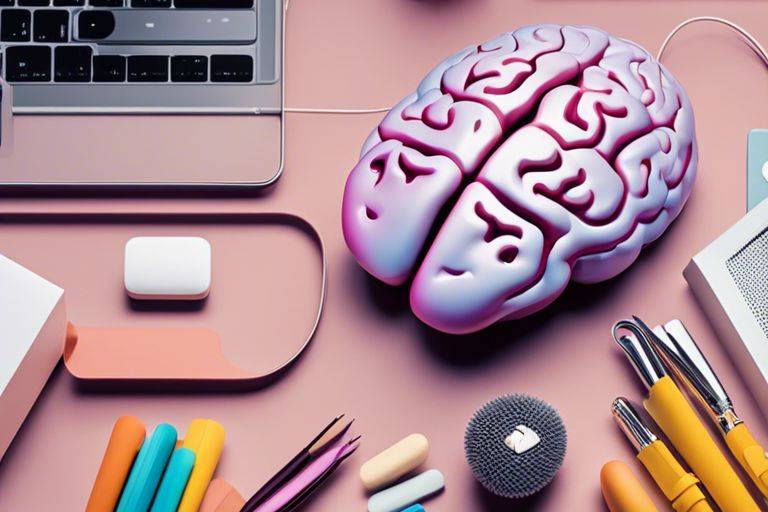
Essential Tools for Building a Second Brain
Many creative professionals are realizing the importance of having a second brain to store and organize their ideas, inspirations, and knowledge. To effectively build a second brain, you need the right tools to help you capture, connect, and cultivate your thoughts. Here are some crucial tools that can aid you in this endeavor:
Digital Note-Taking Applications
To start building your second brain, you need a reliable digital note-taking application that allows you to jot down ideas, organize thoughts, and store information in a structured manner. Applications like Evernote, OneNote, and Notion provide a versatile platform for capturing and managing your notes across different devices. These tools offer features such as tagging, categorization, and rich text formatting, making it easier to retrieve and reference your notes when needed.
Project Management and Mind Mapping Software
Management software like Trello, Asana, or Todoist can help you break down your projects into tasks, set deadlines, and track your progress. Mind mapping tools such as MindNode or XMind enable you to visually map out the connections between ideas, creating a more comprehensive overview of your thoughts and insights. Using these tools in combination with your note-taking application can enhance your productivity and creativity by providing a structured framework for organizing and executing your projects.
Brain: Integrating project management and mind mapping software into your workflow can streamline your creative process and enhance your ability to bring ideas to life. By visualizing your projects and breaking them down into manageable tasks, you can effectively plan and prioritize your work, leading to greater efficiency and output.
Cloud Storage and Data Security
NoteTaking:
Plus, it is crucial to ensure that your second brain is securely backed up and accessible from anywhere. Utilizing cloud storage services like Google Drive, Dropbox, or iCloud can safeguard your data against loss or damage, while providing the flexibility to sync your notes and projects across multiple devices. Implementing encryption and strong password protection adds an extra layer of security to your digital workspace, safeguarding your sensitive information from unauthorized access.
The Art of Capturing and Curating Ideas
After How Having a Second Brain 🧠 helped me manage my social medias and my online business freelancing, creative professionals are recognizing the importance of capturing and curating ideas to fuel their creativity and productivity. This process is imperative for managing the influx of information in a digital age where inspiration can strike at any moment.
Techniques for Effective Information Capture
Capturing ideas effectively is crucial for maintaining a steady flow of inspiration. Utilize tools like note-taking apps, voice memos, and digital scrapbooks to capture thoughts, images, and links on the go. Take advantage of these tools to ensure no brilliant idea slips through the cracks.
Organizing Ideas for Easy Retrieval
Retrieval of ideas is just as important as capturing them. Create a systematic approach to organizing your ideas, whether through folders, tags, or categories. This will streamline your creative process and make it easier to access and build upon your thoughts when needed.
By implementing a structured system for organizing your ideas, you can efficiently navigate through your creative archive and retrieve valuable insights at a moment’s notice. This not only optimizes your workflow but also ensures that no idea goes to waste.
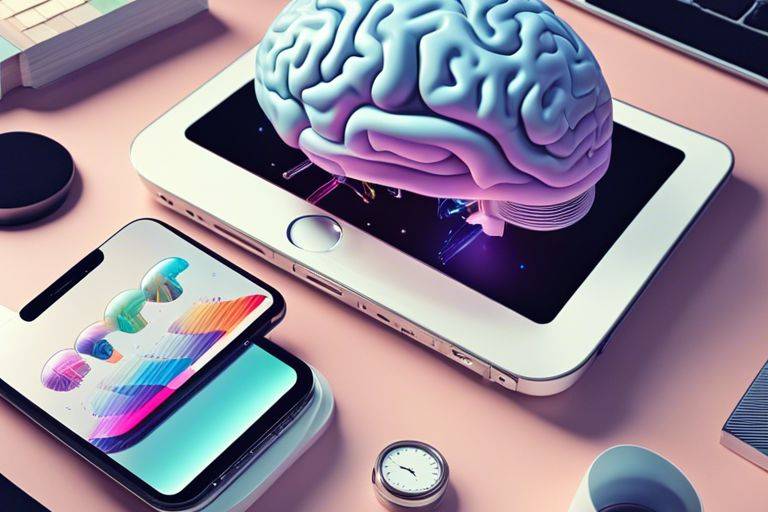
Enhancing Creative Output with a Second Brain
Streamlining the Creative Process
For creative professionals, the ability to streamline their creative process can make a significant impact on their productivity and quality of work. By implementing a second brain system, individuals can capture ideas, inspiration, and research in a structured manner that allows for easy retrieval and organization. This organized approach helps creatives stay focused, avoid mental clutter, and quickly access relevant information when needed, ultimately leading to more efficient and effective creative output.
Case Studies of Successful Second Brain Implementations
The implementation of a second brain has proven to be a game-changer for many creative professionals. By leveraging digital tools and techniques to create a repository for ideas and resources, individuals have seen a marked improvement in their ability to generate and develop creative concepts. From writers and designers to marketers and entrepreneurs, a second brain has enabled professionals to enhance their creative output in ways they never thought possible.
Process:
- Writer: Increased daily word count by 30% after implementing a second brain system.
- Designer: Reduced project timelines by 20% by effectively organizing design inspiration and references.
- Marketer: Improved campaign performance by 15% through better ideation and content planning.
For instance, the writer case study highlights how the implementation of a second brain system led to a substantial increase in daily word count. This improvement demonstrates the power of organization and structured information management in boosting creative output. Similarly, the designer case study showcases how streamlining design inspiration and references can lead to significant time savings and improved project efficiency. These real-world examples underline the importance of adopting a second brain to unlock the full creative potential of individuals in various fields.
Overcoming Obstacles in Establishing a Second Brain
Common Pitfalls and How to Avoid Them
Not establishing a clear system from the outset can lead to confusion and overwhelm when trying to implement a second brain. To avoid this, start by defining your goals and outlining a structure that works best for your creative process. Additionally, not prioritizing regular maintenance can result in your second brain becoming cluttered and ineffective over time. Set aside dedicated time each week to review, organize, and update your digital workspace to ensure its continued usefulness.
Balancing the Analog and Digital Aspects of Creativity
On the journey to establish a second brain, it is crucial to strike a balance between utilizing digital tools for efficiency and embracing analog methods for creativity and innovation. Over-relying on digital platforms can sometimes stifle the free flow of ideas and limit your creative thinking. Incorporating analog practices, such as sketching, journaling, or mind mapping, can help stimulate different parts of your brain and foster more diverse and original ideas.
For instance, keeping a physical notebook or sketchbook alongside your digital note-taking app can provide a tactile and visual element to your creative process, enhancing your ability to connect ideas and concepts in new ways. By integrating both analog and digital tools into your workflow, you can leverage the strengths of each to create a well-rounded second brain that supports your artistic endeavors.
Thriving in a Fast-Paced Creative Economy
Now more than ever, creative professionals are navigating a fast-paced economy that demands constant innovation and adaptation. In this dynamic landscape, the ability to stay ahead of trends, manage multiple projects simultaneously, and collaborate effectively is crucial for success. One tool that has proven invaluable in helping creatives navigate this fast-paced environment is a second brain.
Preparing for the Future of Creative Work
With the rise of remote work and increasing competition in creative industries, professionals need to be equipped to handle the demands of this new era. By establishing a second brain system, creatives can organize their thoughts, ideas, and projects in a structured manner, enabling them to access relevant information quickly and efficiently. This preparation not only enhances productivity but also fosters creativity by freeing up mental space for new ideas to flourish.
Long-Term Benefits of Leveraging a Second Brain
Thriving in a fast-paced creative economy requires creative professionals to constantly adapt and evolve. By leveraging a second brain, professionals can enhance their ability to learn from past experiences, identify patterns, and make more informed decisions. This long-term benefit goes beyond just boosting productivity; it empowers creatives to cultivate a deeper understanding of their strengths, weaknesses, and areas for growth, ultimately leading to more sustainable success in their careers.
Leveraging a second brain enables creative professionals to harness the power of their collective knowledge and insights in a structured and actionable way. By establishing a system that captures and organizes valuable information, creatives can tap into their reservoir of ideas, inspirations, and knowledge to fuel their creative pursuits. This practice not only streamlines workflows but also fosters a culture of continuous learning and growth, important for thriving in a competitive creative economy.
Summing up
Creative professionals are facing an unprecedented amount of information and demands on their cognitive resources. In order to stay organized, inspired, and productive, having a second brain is crucial. By utilizing tools and systems to offload and process information, creatives can free up mental space for innovative thinking and effective decision-making. Your Second Brain: the answer to information overload is an vital resource for navigating this digital age efficiently and creatively.
FAQ
Q: Why do creative professionals need a second brain?
A: Creative professionals often juggle multiple projects, ideas, and deadlines. Having a second brain helps them organize thoughts, store important information, and enhance creativity.
Q: What is a second brain?
A: A second brain is a system or tool that helps individuals capture, organize, and access their ideas, notes, and information in a structured way for improved productivity and creativity.
Q: How can a second brain benefit creative professionals?
A: A second brain can help creative professionals streamline their workflow, keep track of inspiration, collaborate effectively, and ensure that no idea or detail gets lost in the creative process.
Q: What are some popular second brain tools for creative professionals?
A: Popular second brain tools for creative professionals include Evernote, Notion, Roam Research, and Microsoft OneNote, each offering unique features to assist in organizing and accessing information.
Q: How can a second brain enhance creativity for creative professionals?
A: By having a second brain to store and connect ideas, creative professionals can free up mental space, explore new perspectives, make meaningful connections, and overcome creative blocks more effectively.
Q: How does a second brain contribute to professional growth for creative professionals?
A: A second brain can serve as a repository of knowledge, insights, and learnings, enabling creative professionals to reflect on past work, generate new ideas, and continuously improve their skills and expertise.
Q: In what ways do current challenges make a second brain necessary for creative professionals?
A: In today’s fast-paced and information-overloaded world, creative professionals face the challenge of managing increasing complexity and uncertainty. A second brain provides a reliable system to navigate these challenges, stay organized, and thrive creatively.
